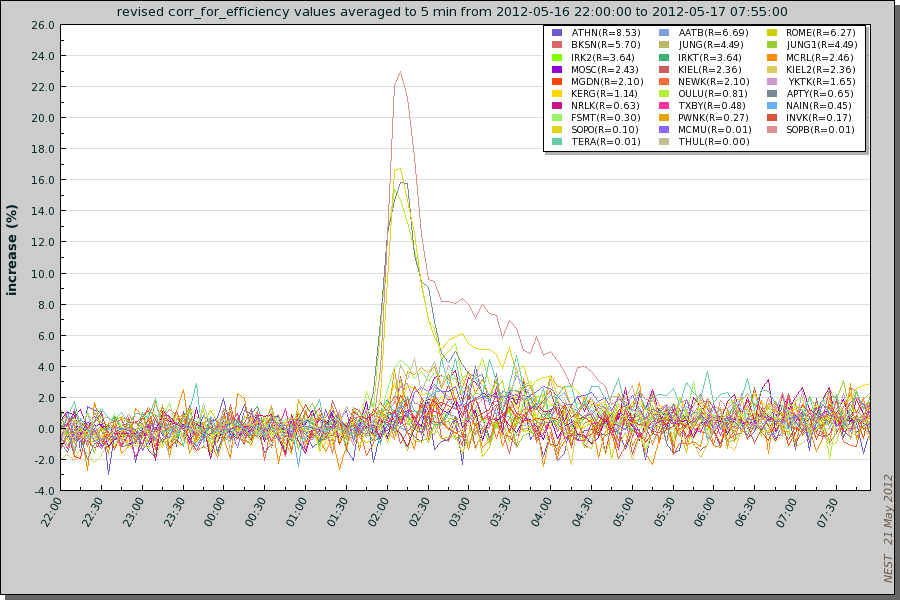|
The first relativistic solar particle event of the present activity cycle ! Active region NOAA 11476 produced a moderately strong (GOES class M5.1) flare at 01:25 UT on 17th May (SolarMonitor). The active region was located at N07 W88 at the Sun. Near 01:53 UT the worldwide network of neutron monitors (NM) detected the first enhancement caused by relativistic protons from the Sun since December 2006. The flux remained above background during about one hour. Relativistic protons travel at a speed close to the speed of light. These 'solar cosmic rays' are the most energetic particles that can be accelerated at or near the Sun and are a rare counterpart of solar activity. The figure below shows the time profile of the NM observations provided by the NMDB network. The event is only seen by some NM stations. The highest signal was detected at South Pole (NM operated by Bartol Research Institute, Univ. of Delaware, USA). The different signatures of different instruments give important information on the energy spectrum of the solar particles and on the anisotropy of the particle flux. The first relativistic protons that reach the Earth propagate along the interplanetary magnetic field. A network of neutron monitors all over the Earth is necessary to reveal these characteristics. The fact that some NM stations do not see the event is as important as the information of the NM stations that observe a count rate increase. The combination of the data of all NM stations of the network is needed to understand the origin of the energetic particles in the solar corona.  (click to enlarge) Ground based NMs detect the secondary hadronic component. It is generated in collisions by the primary high-energy protons and ions with the atomic nuclei of the atmosphere. To know more about cosmic rays and neutron monitors, go to NMDB website (public outreach). To follow the evolution of the cosmic ray intensity, click on 'Cosmic rays now'. Protons at lower energies are observed aboard spacecraft. The GOES spacecraft operated by NOAA saw a fast rise in the flux of solar protons, followed by a slower decay, which is still ongoing on 18 May 2012. Several stronger solar proton events than that of 17th May were detected by GOES in January and March 2012. The solar energetic particle event of 17 May 2012 extended to much higher energies than these earlier ones, but was weaker at lower energies. Through our research we try to understand the reason for these differences. | |






